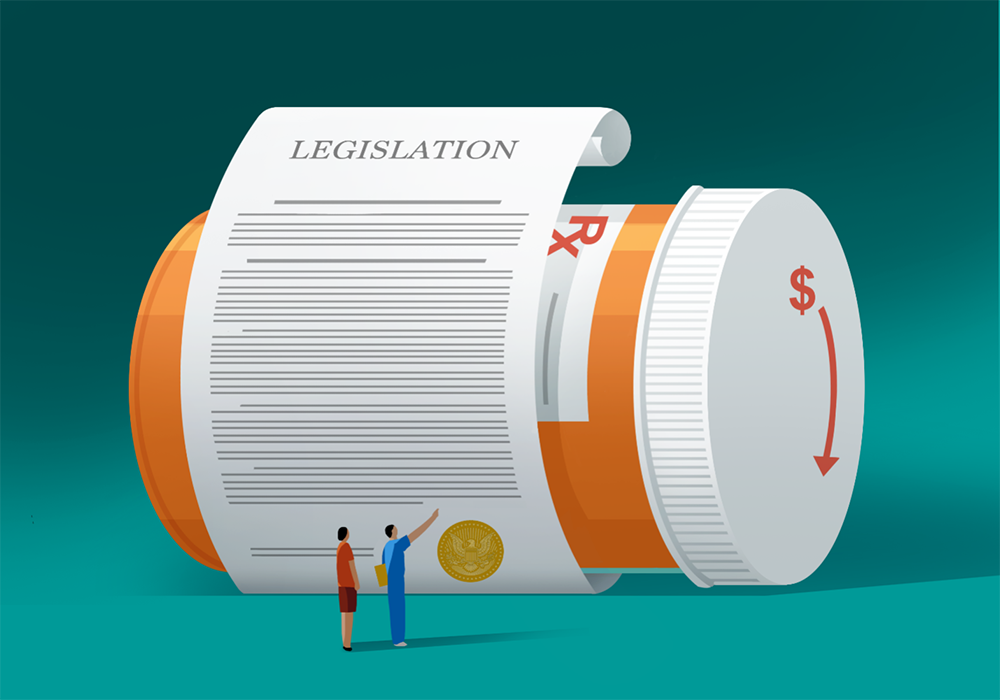On average, Americans pay two to three times as much as people in other countries for prescription drugs, and one in four Americans who take prescription drugs struggles to afford their medications. Nearly 3 in 10 American adults who take prescription drugs say that they have skipped doses, cut pills in half, or not filled prescriptions due to cost.
In 2019, the mood was hopeful. As we looked ahead to the next decade, Republicans and Democrats in both the U.S. House of Representatives and Senate appeared to be at a consensus point on a major policy issue: access to affordable prescription medications for the American public.
Reaching that pivot point wasn’t an easy journey. Patients and providers had lobbied the U.S. Congress. The media had published emotional stories of how the healthcare system had failed families in need of lifesaving treatments. Every other industrialized country had some type of structure to keep costs in check so paying for acute and chronic conditions would not deplete the family bank account.
Then a pandemic threw off the delicate dance of U.S. legislation for three years and counting. There’s still no solution in sight.
A Labyrinth of Limitations
The situation is complex. This is an exciting time in science, with more investment in innovation yielding survivorship advancements that we previously only dreamed about. But those treatments come at a cost in a system driven by profit margins, not saving lives.
Many biological and pharmaceutical companies partner with provider and patient groups to find mechanisms to increase access to prescription medications. But systemic factors—unfair pricing, few generics, limited negotiation power, and more—mean that many families only face restrictions when trying to find relief. Additionally, the terminology for healthcare coverage and the medications themselves is confusing. Brand-name drugs. Off-label usage. Biologics. Biosimilars. Generic drugs. Therapeutics. Chemotherapy. Immunotherapy.
Americans require dedicated care coordination to understand and navigate the system to achieve optimal outcomes. But the many hands involved before they even reach that point further add to their costs. Those most in need of the medications are literally paying the price.
Policymakers Pass Legislation to Lower Pricing
Supporting some solutions, the Inflation Reduction Act was signed into law in August 2022. Some of its specific provisions for drug costs include:
- Requiring the Centers for Medicare and Medicaid Services (CMS) to negotiate certain prescription drug prices under Medicare beginning in 2026
- Requiring drug manufacturers to issue rebates to CMS for brand-name drugs without generic equivalents that cost $100 or more per year per individual or whose prices increase faster than inflation
- Eliminating beneficiary cost sharing above Medicare’s annual prescription drug out-of-pocket spending threshold and capping annual out-of-pocket spending at $2,000
- Expanding Medicare’s low-income prescription drug program to provide full premium subsidies with no deductible for those with incomes of up to 150% of the federal poverty line
Much of the discussion leading up to the bill’s passage surrounded insulin costs and seniors on fixed incomes whose medication costs were outpacing the rate of investment. The rhetoric was so high that CMS issued statements in response to the 4,000 comments it received, saying it would “lower prescription drug costs, address challenges that independent pharmacies face, and improve the quality of pharmacy care.”
Most recently, in June 2023, U.S. Senator Bernie Sanders (I-VT), chair of the Health, Education, Labor, and Pension Committee that oversees many U.S. healthcare topic areas, issued a statement drawing a line in the political sand.
“I will oppose all nominations until we have a very clear strategy on the part of the government as to how we’re going to lower the outrageously high cost of prescription drugs,” Sanders said. “Politicians for years have talked about the high cost of prescription drugs, relatively little has been done, and it’s time that we act decisively.”
ONS Perspective
Nurses are on the front lines of health care, seeing patients and families wade through the morass of paperwork, preauthorizations, step therapy, denials, and fees before getting the treatments they need to survive. Perhaps the political climate and will is shifting. Nurses’ voices in this discussion will help change the dynamic and find real answers to the immediate problems of accessible, affordable prescription medication. Get involved in ONS advocacy.






